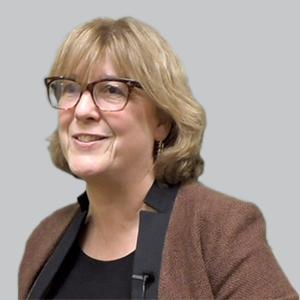Learning from the Past in the Development of Parkinson Disease Cell Therapies
The associate professor of neurology and neuroscience at Weill Cornell Medicine spoke about the history of cell therapies for Parkinson disease and how it’s informing current work.
Claire Henchcliffe, MD, DPhil, an associate professor of neurology and neuroscience at Weill Cornell Medicine

Claire Henchcliffe, MD, DPhil
In patients with Parkinson disease, motor symptoms are a major portion of how the disease impacts them. As a large part of these symptoms are the result of an absence of dopamine inputs into the striatum, the mainstays of treatment, such as levodopa, work to replace this deficiency.
Although, medications such as levodopa tend to wear off, resulting in off periods where patients can develop troublesome dyskinesias. Because the loss of dopaminergic cells is limited to one area of the brain, that these cells could be replenished with either autologous cells or allogeneic cells, opening the door for cell therapies to aid in solving this challenge.
Claire Henchcliffe, MD, DPhil, an associate professor of neurology and neuroscience at Weill Cornell Medicine, is part of a group seeking to develop a cell therapy to address this. As such, she sat with NeurologyLive to provide some insight into how their work got to this point and the science that laid the foundation for it.
NeurologyLive: How did this work you’re doing come to fruition? What is it building on?
Claire Henchcliffe, MD, DPhil: In terms of the history of Parkinson disease treatment, we’re not the first generation of clinical researchers to be thinking about providing a cell therapy. Actually, there's a pretty rich history of transplantation in Parkinson that dates back to the 1980s, so we've been able to learn quite a lot from that. Back in the ‘80s, for example, various groups across the world tried using autologous tissue that was harvested from a patient's own adrenal gland to harvest dopaminergic cells and use those to transplant into the brain. It was a very invasive procedure to do the harvest and the benefits were modest at best, so that didn't continue forward. However, around the same time in the 1980s, there were a series of clinical studies—it actually started in Lund, Sweden—in which they used a different cell source, they used an allogeneic cell source that was derived from a human fetal ventral mesencephalic tissue. These fragments of tissue, or this very small area in the fetal mesencephalon, actually contains, among others, precursors of cells that are going to become the authentic dopamine-producing cells in the substantia nigra in the in the child and in the adult. With encouraging preclinical studies, they were actually then able to go on in a number of open-label studies in small numbers of patients and show that it was feasible, and it was safe to do the transplants. The cells would survive—they could actually image the cells using markers for dopaminergic cells—and in some patients, they could get a clinical benefit.
It was encouraging enough that by the 1990s, 2 groups actually started sham-surgery controlled clinical trials using that same type of tissue, the fetal ventral mesencephalic tissue. These were incredibly carefully done studies. One was led by Curt R. Freed, MD, and one was led by C. Warren Olanow, MD, and they were published back in 2001 and 2003. Although those studies didn't meet their primary end points, they were hugely beneficial for the field in multiple ways. First of all, they could show that, again, it's visible and it's safe to make the transplant. Second, they could show, with very rigorous imaging procedures, that you could get some persistence of the engrafted cells and they had dopaminergic markers or function. Then, third, although they didn't meet the primary end points, they could find subsets of patients within the cohorts who actually had derived some clinical benefit. Actually, even today, going back to those studies—there's an ongoing study called the TRANSNEURO study (NCT01898390), in Europe, led by Roger Barker, MBBS, MRCP, PhD, in which using an optimized clinical trial design based on what was found in those studies, they're going ahead to test again what the benefits of these fetal tissue sources could be.
Where has the field gotten with this work to this point?
Obviously, there's some evidence with the fetal tissue that it could be beneficial, but there are just so many drawbacks. With the advances that have been made in stem cell technology over the past 1 or 2 decades, we're really in the position now where it should be possible to grow an unlimited cell source to be able to differentiate those cells into something that are, to all intents and purposes, authentic adult midbrain, substantia nigra, dopamine-producing neurons. With unlimited cell sources, you can envisage a situation in which you could produce banks of cells that could almost provide an off-the-shelf therapy, eventually, for people with Parkinson. You would have the advantage that these cells would be derived under incredibly controlled conditions, really rigorous quality-control, rigorous release criteria, and all of the preclinical work that's necessary to bring a therapy like that to the clinic could actually be done—in terms of tumorigenicity assays, in terms of efficacy, and so on and so forth—in the same cells that are actually going to be transplanted into people with Parkinson.
Transcript edited for clarity.